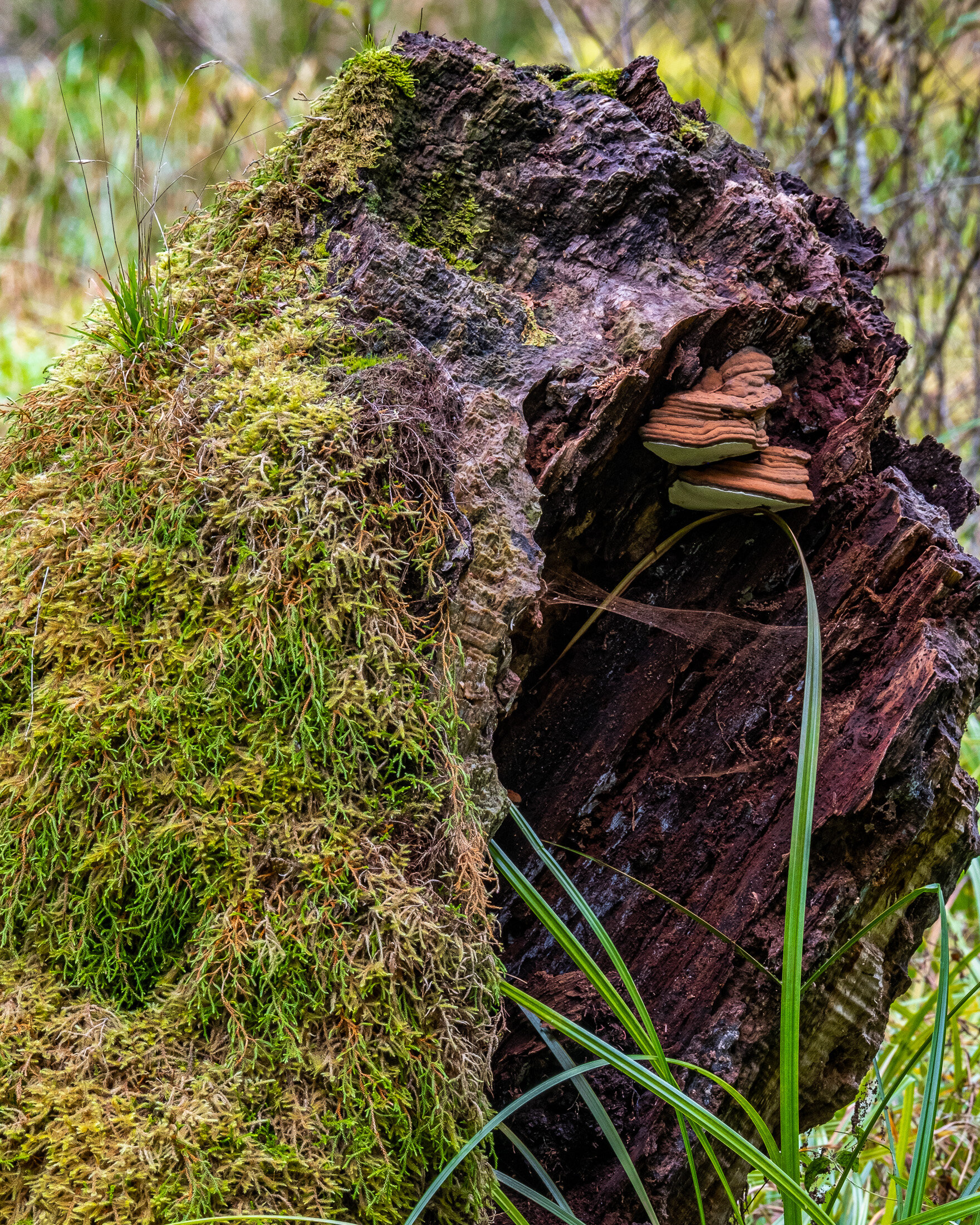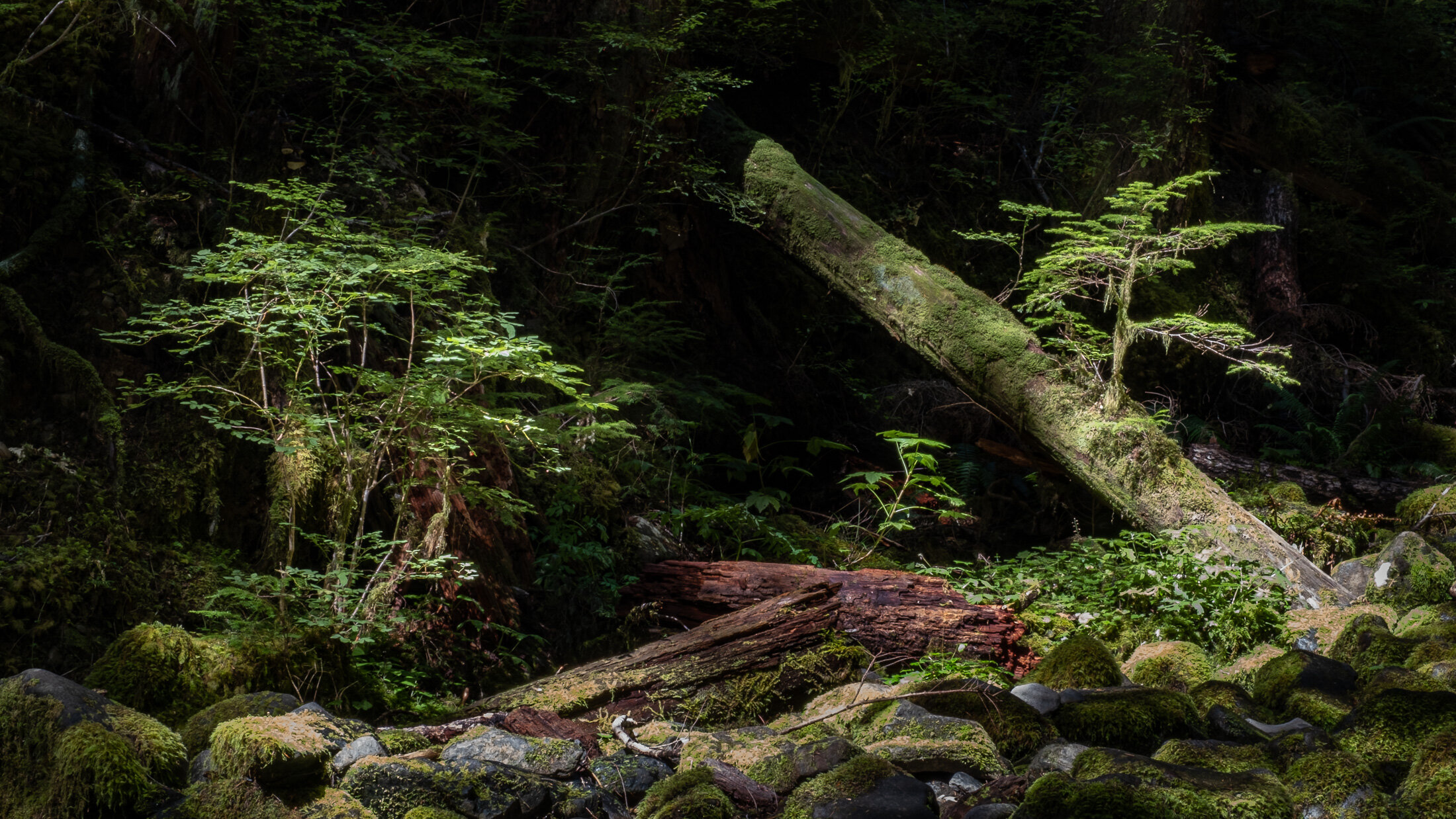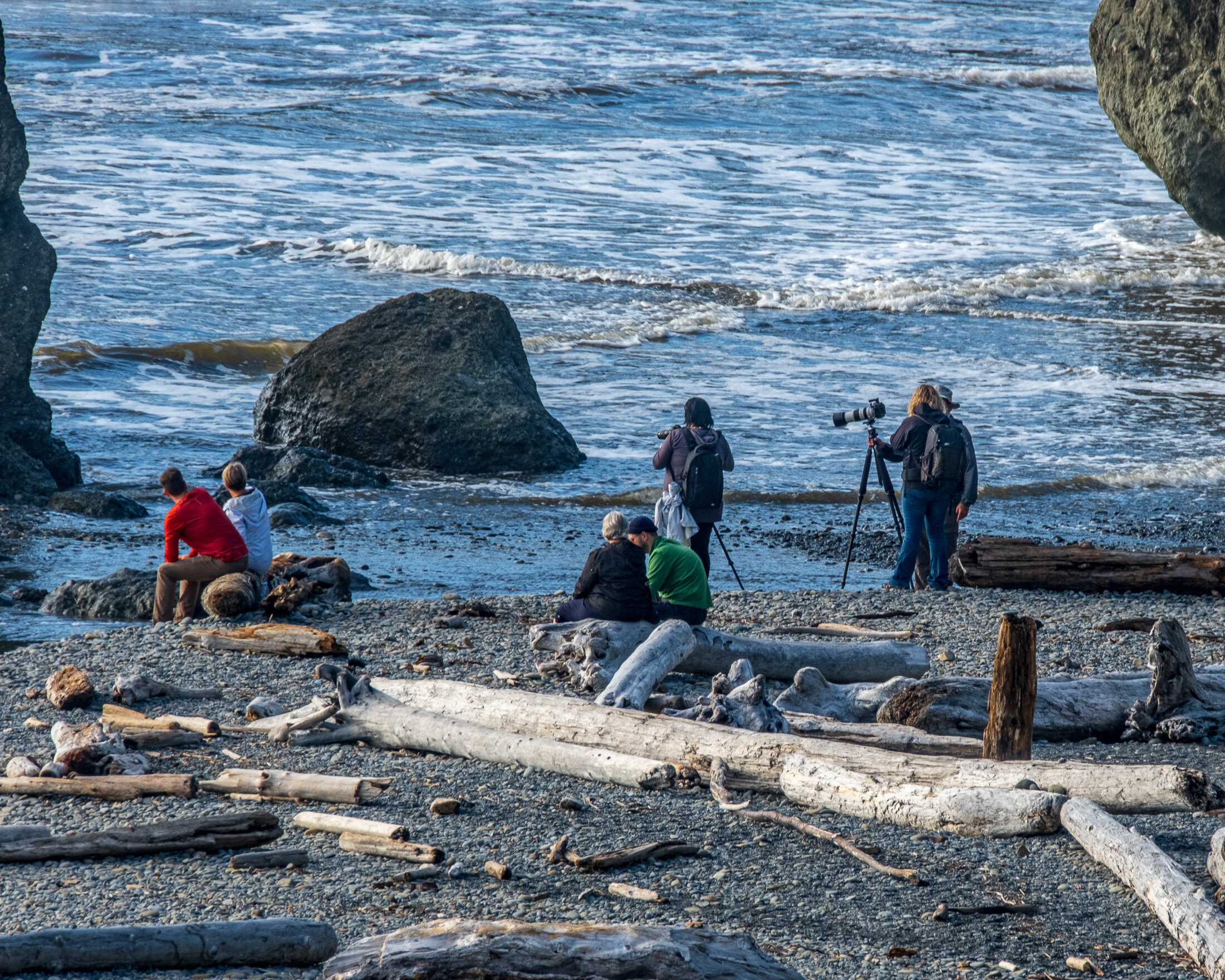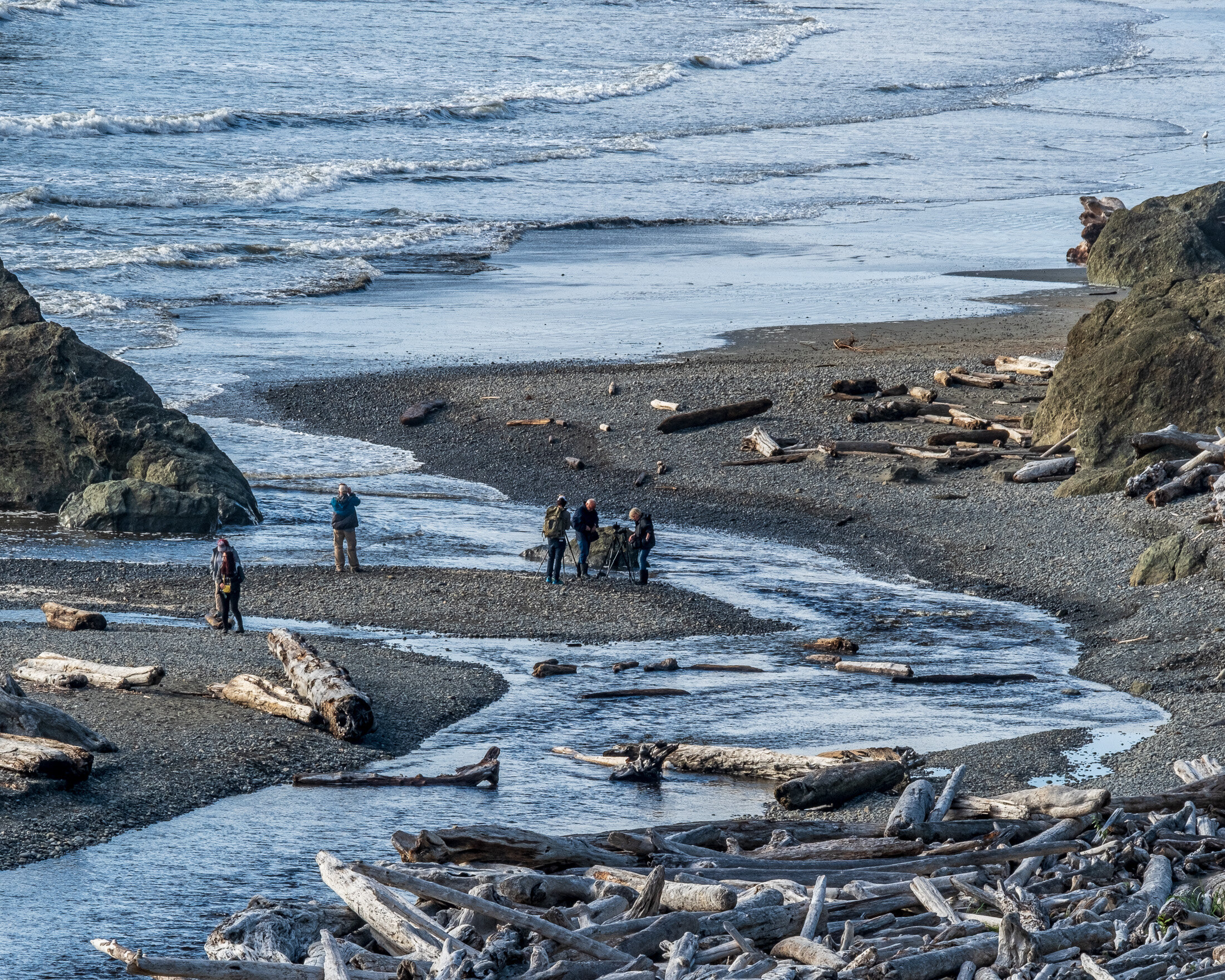Lake Quinault Photo Workshop — final thoughts and moving forward
Will I do another workshop in the future? Oh, definitely. The trick is to understand when the workshop will push your goals forward and make sure the workshop you take aligns with that.
My current idea of what I want to do in the future:
Private session (1-3 days) with William Neill in Yosemite, preferably in the spring. My goal: spring 2020
Art Wolfe's Katmai Bear workshop, because spending time photographing the bears is a thing I really want to do, and I know it'll be one of the best ways to do that. When? Not until I have working knees. The movement needed is well beyond me until then
A winter tour in Yellowstone with a good guide or group. When? This is something I've promised myself once I no longer wear clothes I buy in the big and tall store. Partly because it's incentive, partly because fitting out for that kind of tour properly is a lot more expensive when you have to round up large sizes.
Ditto, polar bears in Churchill.
Art Wolfe's Carmel Workshop: similar instructional setup as the Lake Quinault, but less intensive physically. Also really close to home. This seems a perfect follow on to this workshop, since I still have a lot to learn.
Frans Lanting spring workshop. This may replace the William Neill one next year, or happen after. But Lanting does some spring workshops that look like really interesting involving macro and spring flowers. Again, local, which helps manage costs.
So I have plenty of things I've identified that are well beyond what I expect to have budget for, and it'll be more about figuring out which ones I can schedule in when and what I want to prioritize.
Should you take a workshop? Yes, if you can identify what you want to accomplish with it. If you can do that, then start researching which workshops solve that goal, and which workshops that solve that goal have instructors you know and respect, or that you can find out enough about to be willing to work with them. Never ever take a workshop based on instructor or location without understanding the entire situation, unless you are going to be happy when it turns into a disaster.
The results of my workshop
During the workshop I shot 421 images. When I got home and loaded them all onto the iMac (big, calibrated screen) and reviewed them, I did my normal cull and processing workflow. Out of that 421 images:
23 were deleted immediately as pure technical dings (bad focus, etc)
My second edit has me select the images I am going to work on vs those I immediately archive. When I was done, I had 63 photos to do an initial edit on, the other 335 I archived (the archived photos will get a second review in 4-6 months to see if I missed anything, and if not, deleted permanently. I'm a purger, not a hoarder. To date, in reviewing about 13,000 archived photos, I've 'rescued' 13. None of them more than okay images.
As I do my third edit, I'm now evaluating for too-similar subjects, or non-obvious technical flaws. I might make an initial pick of 3 different images of the same thing, and then in this edit decide which one to keep. The rest get archived.
I rank my images this way:
5*: Best of show
4*: Portfolio Quality (whatever that means)
3*: Perfectly okay (used primary for blogging and to supplement the best images in collections)
2*: Archived (to be reviewed and either promoted or deleted in 4-6 months)
X: Nuked as unusable
My final count for this trip was 40 kept images. Of that:
5*: 0 (zero)
4*: 8 (day 1: 3; day 2: 1; day 3: 4)
3*: 22 (day 1: 4; day 2: 7; day 3: 5, plus 6 special)
The six special were images I took of the workshop shooting at Ruby Beach, which I've let the Wolfe people know they can use in promotions if they want. If not, they're still nice images I may use, but nothing special, and I count them separate from the overall workshop.
I ended up with 30 images to add to my collection, 8 of them good quality vs average. I rated none of them great quality, but that's not unusual immediately after a shoot; I more typically review a quarter of work together and re-rank those against each other, and that's when I flag the ones I think stand out. I find the emotional high of just having taken a shot I love tends to cause me to over-rank images unless I wait a bit.
Taking out those 6 special, that means I have 24 workshop images out of 421, or about a 6% keeper rate. My "good/great" ratio is about 2% of all shot and 33% of the keepers. The first number is about normal for my photography, and the latter is way higher than normal. A 6% keeper rate is low for me, but it can vary widely depending on lots of factors.
Yes, I track this stuff. It helps me understand when I'm shooting well and when I'm not.
What does this tell me? It indicates I struggled (duh), but looking at the 1/2/3 day splits, I can see where my keeper rates went up each day, and I think the high 4/5* rate is more an indication that when I wasn't screwing it up, I took the time to really make it work, and I didn't burn a lot of images trying to maybe run across a keeper by luck.
If you had asked me as I left the hotel to drive home how many keepers I had, I would have guessed maybe ten, and I would have told you that was okay. As it turned out, my in-the-field judging of what I had was way off, which isn't, when you think about it, a good thing.
Lessons Learned
The big lesson learned is that I've started figuring out how to shoot quality images in this intimate landscape style. Early on I was completely lost, but midway through that second day, it started to click; not just starting to see compositions, but I found myself starting to think in terms of what I wanted photographs to say, beyond "I just want something that doesn't look sucky". I really found myself taken by the differences between light and dark areas, and so when I ran into the dappled sunlight a bunch of stuff fell into place in my head, and I think that shows in my images.
There are two aspects to learning how to shoot this kind of image: one is the technical aspect of composition and line and contrast and color and light and dark and texture -- but the more important aspect is figuring out how to use all of that to create a good and interesting images, and beyond that, an image that speaks to you, and presents itself to others as your image, not just some generic image that you can't tell the difference between it and a thousand instagram shots. It's that latter bit that's the hardest, but it did start to fall into place for me that second day.
I learned I still have a lot to learn. It's a process; I've started, but I'm far from mastering it. But I love this stuff now that I'm figuring it out, and I'm looking forward to pushing forward with it.
That's all good stuff. I learned some not so good stuff, too.
While I was right that I was in good enough shape to take on this workshop, the more nuanced answer is that I was, but "just barely". I overdid it day one and paid for it on day 2, but all three days I ended having sweated through my clothes and exhausted. I expected this to be a stretch, but it was more of one than I really planned for. Still, with some solid support and understanding from Art's team, I accomplished way more than I thought I would on a number of levels, including physical activity. Bless them for that.
However, when I got tired I got sloppy. My technique went to hell. I hurried rather than slowed down, I gave up on compositions and moved on when they needed more thought and experimentation. I made basic mistakes like poor focus and didn't catch it in the field. These are all really bad issues in technique, and I have to fix them. Now that I'm aware of how poorly this went (especially late in the day) I can compensate and adjust how I take on a shoot to mitigate them, but I have to always be aware of it and working to prevent it.
Beyond that, my post-day shoot reviews failed miserably. Only four of the ten images I submitted for critique made the final cut you'll see below. That's unacceptable. I use the end of day review as a guide when I'm out doing multi-day shoots to see if I have problems I can fix the next day by going back and re-shooting to replace. If I'm doing that poor a job seeing problems during that review, it's pretty useless. I have to fix that, and I'm not yet sure how. I'm going to have to do some experiment/practice before I go out on my next trip.
This one bothers me. I wasted Art's time critiquing images I should have rejected as flawed, and those reviews gave me a more negative view of my progress than I should have had. So I have to figure this out and fix it.
It's all fixable, and the negatives are dwarfed by the positives and what I learned. But I can't sweep them under the rug or ignore them, either. In perspective their fairly minor, but I have to sort them out.
Equipment issues
I also had some equipment issues. There were three problems that cropped up and kept kicking me in the ankle:
A tripod that I couldn't position where I needed it. For a lot of the close focus/macro work with extension tubes, I needed a really steady tripod that I could position close to the subject. The tripod I had, which had a fairly long center tube, wouldn't let me get low enough to the ground, and wouldn't let me get to subjects in awkward locations at all. I decided during day 2 I needed to replace the tripod legs. And in fact I already have, with a set of the Vanguard Alta Pro 2+ 263AT for $141 at Amazon. These are aluminum, not carbon fiber but the weight difference was only a quarter pound and that saved me $80.
The Vanguard has a center post that can be extended to the side or below the tripod legs, so I can adjust it better to arbitrary shooting needs. The camera is no longer directly above the legs, but I can angle it to get it close to something, or get the camera close to the ground if that's what I want. It gives me a lot more flexibility to get close with stability, and the aluminum legs were surprisingly light. For the price, it was an obvious choice. </li>
A failing tripod head. I have an Induro tripod head that I've owned and used heavily for almost 8 years, and I love. I found on this trip, sad to say, that it's failing. It could not hold up my camera with the 100-400 attached without everything slowly sliding down towards the horizon. The head seems to have simply worn out.
I decided to replace it with the Benro PU60 which was $125. It has the Arca-Swiss compatible quick release, a locking panning action, and holds a 22 pound camera, and good, easy to manage knobs that are sized and places so you won't mistake one for another, and which should be easily twisted even in winter gloves.
So for under $300, I replaced the tripod setup. Some early quick tests indicate the Vanguard is pretty stable and doesn't seem to have much jiggle, but I need to field test it. And it should solve the biggest problems I had on this trip.
Bad lens choices: I made a huge lens choice mistake for this trip, opting to bring my 100-400 instead of my 40-140. I think this was a sub-conscious "safety blanket" choice, given this is my favorite and most comfortable lens, but I convinced myself I could cover the range fine, and that was a big mistake.
What I ended up with was my 16-55 F2.8 (Fuji equivalent of the 24-70 35mm), and the 100-400 F5.6 (fuji equivalent of a 150-450 in 35mm). That left a gap between 70mm and 150mm in 35mm numbers I simply couldn't cover, and it turned out to be a key range I needed to have for some compositions. Shooting wide and cropping sort of worked in some cases, but not really. I crippled a bunch of my options by making a poor choice of gear. One could argue that shooting with constraints helps you focus your work -- and I agree -- but it also assumes your constraint isn't something like, oh, shooting a safari with a 10mm super-wide. I strongly regretted not having my 50-140 F2.8 (Fuji's 70-200) with me, and it impacted what I could accomplish. A big mistake on my part.
I also brought as an experiment a little-used lens, my 8mm manual focus fisheye. I hauled it out twice, and both times quickly realized the workshop was a stupid time to ALSO try to figure out how to use a lens like this. So it quickly went back in the bag, and it has to be its own project. Nice idea, but yeah, let's take some big concept you're struggling with and try to solve that by layering on this other thing you're also struggling with. That'll make it easy, right?
So some of my choices were... sub-optimal. I do think I made the best of what I had (and in fact, one of my favorite shots came with the 100-400), but I could have chosen more wisely.
Having to focus on the wide angles, I found I really enjoyed that, and actually loved throwing on an extension tube and going close and personal. Something I want to do more of now that I have a tripod that won't make that difficult to impossible.
Nobody's perfect. The goal, though, is to understand the mistakes and flaws, and work on ways to make sure you don't make them again. Life is to short to repeat mistakes. There are so many mistakes I haven't made once yet...
Image Critiques
And now, the actual images, with some thoughts and commentary.... (Finally! I hear you say. Both of you who got this far...)
I've broken these up by day, with my comments coming after each group.
The first three images are my "4*"s. The first was shot straight up into the canopy with the intention of blowing out the sky and really trying to turn it into an abstract. I really love how this one came out. The second was of a stump surrounded by foliage and surrounded by other trees. I did some work to pop out the color, but I think it's a nice example of the kind of composition to look for in these woodlands. The third was my waterfall shot, which I was able to do without my ND filters, since they were in the car and my legs were killing me. It's a nice shot. I've got better waterfall shots, but I like how this came out and shows off the moss on the rocks.
The next three are okay, but could be better. The first is a mushroom, but looking at it now, I didn't work for a great composition. I took a pretty generic shot. It's nice, but, just nice. The second of this group I was trying to play with the fallen tree as an angled line, and contrasting the color and texture of the moss and the bark. I think it's okay but nothing special, and I never really found a usable angle that properly showed off the fallen tree the way I wanted.
Onward into Day 2
The first image is the only one I ranked 4* on day 2. It's a composition I found while out walking with Art along the entry road at Hoh, and I love the contrast of the dark frong with the greens and how it's sharp focus stands out from the background. This is the top of a stump of a fallen tree, which has now spawned a new generation of life inside it.
Next is another stump that has spawned a new generation. I like it, but I really couldn't find a way to make it pop and I didn't properly control aperture to blur the background enough. it's okay, but could be better. Image 3 is a chunk of a trunk who's roots are underwater in a pond. I think it's got some nice interest but it's a bit busy and I could have controlled the background better (again).
Image 4 is of a nice moss covered stump that had an internal hollow where it had rotted, which finally caused the tree to fail. I love the moss jackage and how it compares to the texture of the wood in the hollow. My eyes were caught by that thing in the hollow, which I first thought was a termite nest, but is in fact a mushroom. The next image is a close up of that mushroom, which is a fascinating thing to me.
The next two images were attempts to do super closeups of some brand new blackberry growth at the top of Ruby Beach. The spirit was willing, but the tripod and I couldn't get things to work so I never got the sharpness I was trying for. There was also enough of a steady breeze that things never stopped moving, which hurt. Nice experiment, but I'll do this again some other time under better conditions with smarter management.
And finally, a landscape of Ruby Beach. I submitted an alternative of this to Art to critique and her thought it was pretty good, but it had some whitewater from a wave along one edge of the frame. This is an alternative shot without that, and he's right. It's better without it.
And finally, day 3's images:
I think overall the Day 3 images are a lot higher quality than the first two days. This first image was one where the final image really represents what I was trying to bring out, with the "three brothers" of the similar growths of different sizes in the light of some dappled sun, set off by the darkend shadows around it. There are some nice details here, that angled stump, the red wood stump in the center and the moss covered rocks. This is my favorite image of the three days, and the one image Art really liked as well.
The second image is the one I showed before, the glowing backlit leaves iwth the strong dark branching structure through it. I can critique this: I could have fuzzed the leaves more, or put it into sharper focus. Any of those would have worked. I kind of wish I could have made that moss stand out more, but in reality, it's supporting the leaves, not the other way around. I do love how there's just a tiny bit of blue sky peeking through in places and it's not blown out.
Image 3 is another that got me what I was looking for, which was showing the fern at the base of the tree in sunlight surrounded by gloom. I love the look of the moss and the tree. Maybe I could have cleaned out the dead fronds, but in reality, I like shooting what's there and not manufacturing what it could be.
The fourth image is from Rialto beach and is the texture of a fallen tree washed in by a storm. I love the contrast of the knot and the rocks that have found their way into niches. This one screamed black and white, and I love how it came out. It'd make a nice wallpaper image for the computer (and probably will soon)
Onto the 3* images. This was a rock in Sol Duc with some moss and lichen and I think it's got nice texture and some interest, but it's merely okay. and a future wallpaper.
The next images are back at Rialto Beach. Another Black and white of the tree with some interesting lines and contrasting dark shadows on it. I don't like it as much as the first, but I think it's just fine. Following are two images of fallen trees I shot because I liked the texture and thought they'd make nice wallpapers. After that is a tree stump with a lot of rocks, with some really nice texture and color to give it interest.
The last six images are the ones I shot of the workshop down on Ruby Beach shooting their images. They're nice, fun images, but really out of the scope of what I was trying to do at the workshop, although they'll be useful down the road, perhaps.





























